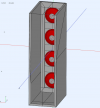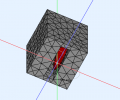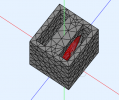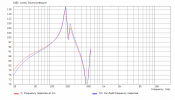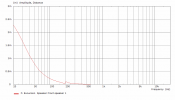Yes. The spinorama data lack of important insides in the bass behavior of a loudspeaker. Even if you have a look at simpler monopole speakers you can't see much with these measurements. For example take the superior behavior of a stand mount speaker with a bass near the floor vs. a book shelf speaker on a stand. The floor bounce phase offset can't anywhere be found in the spinorama data but will be present with almost any bookshelf speaker placement in a real room.It would certainly be interesting to simulate how different speaker concepts excite a sample room if the speaker position in the room is always identical, but that's not the goal of the thread.
Now with dipol speakers the complexity is take to another level. As you might have noticed the frequencies where the resonances are will slightly change if you add a solid floor and to place the speaker on a floor is very likely. So should the simulation contain a floor? I would say of cause it should.
The question is where does the speaker end and where does the room beginn and with bass frequencies I would argue that the whole room is the speaker.
A big problem yes. But what did you get from using free field conditions to evaluate speaker designs in the bass frequencies? For monopoles I would say you get some inside but you have to have knowledge about room interaction with monopole speakers. For dipols there isn't much research about the room interaction so your claimIt is simply not possible to create a simulation or measurement for every listening room in the world.
has to be evaluated in the first place. I would argue that even for monopol designs the design goal of a flat frequency response in the bass doesn't deliver the highest possibility of a good in room response. A lot of listening rooms are more similar for a speaker class (size) and some assumed room gain is beneficial (have a look at the KEFs bass tuning). So I would claim that for dipole designs there might be much more unexpected behavior which is on average better but doesn't look that good if you have a look at the free field response only.If free field measurements or simulations in the bass-midrange show you errors in the radiation and directivity, then the probability that this speaker will cause problems in your listening room (and measure less well) is much higher than a speaker without design flaws.
When we use simulations we are pretty powerful. I think you restrict yourself to established types of presenting data here. But in this context you don't get much from the advantage that you can compare these data to other free field data, since it doesn't tell much without taking the room or at least the floor into account anyways.


